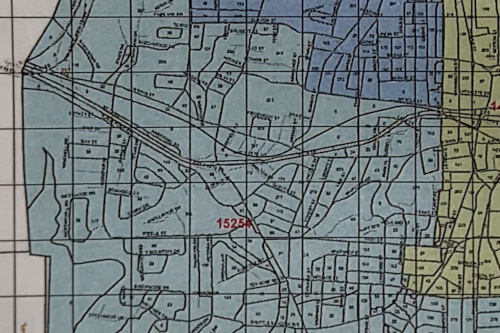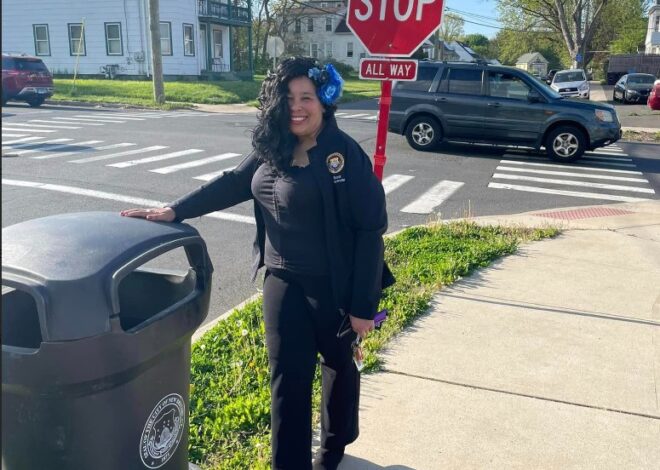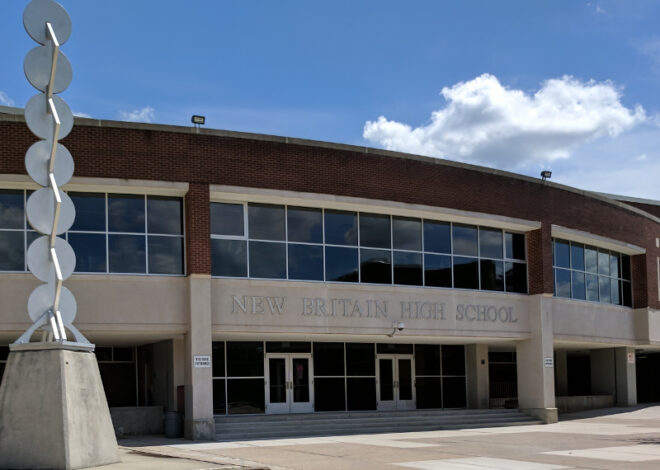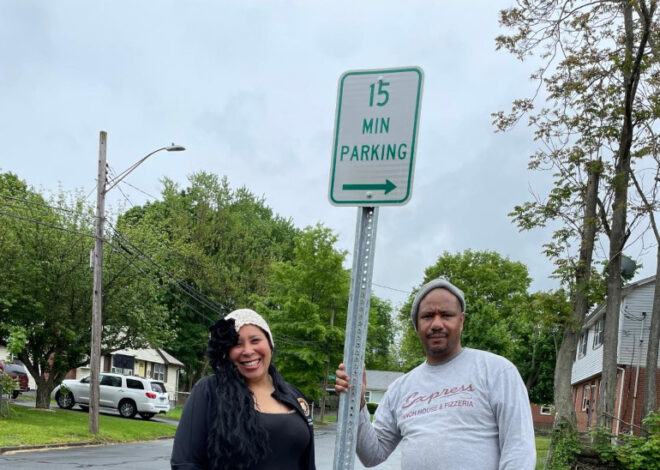
Despite Racial Gerrymandering Concerns, Council District Map Up For Final Vote
A plan for new City Council districts, apparently limiting the voting power of the communities of color, is to be considered by the Council.
The proposal being considered in the 12 – 3 Republican majority Council appears that it could be sidestepping the possibility of creating three Council districts with solid voting age majorities of greater than 60% Latino, African-American and others communities of color.
Instead, the map, proposed by Republican Registrar of Voters Peter Gostin and approved by the Redistricting Commission appointed by the majority Republican Council, would appear to have only two districts with voting age populations of greater than 60% communities of color, with the city’s people of color divided up so that another two would be nearly 50% white and the fifth would be majority white.
The districting plan could limit the voting power of communities of color to elect City Council representation of their choice.

Once approved, the new City Council ward boundaries will remain in effect for ten years. Those districts will be in place for the 2023, 2025, 2027, 2029 and 2031 city elections.
Like with Congressional, State Senate and State House of Representatives districts, the five districts on the New Britain City Council, commonly called “wards”, are reapportioned every ten years, following the national decennial census. Two thirds of New Britain’s fifteen member Council are presently elected, two each, from the five wards. Another five Council members are elected at-large, though the Charter Revision Commission is considering having all Council members elected from the five wards. The reapportionment, also called redistricting, is done to ensure that each district represents approximately the same number of people.
According to data from the United States Census Bureau, the percentages of communities of color (including Latinos, African Americans, Asian Americans and others) among New Britain’s population has grown from 52% in the 2010 census to nearly 63% in the 2020 census.
That increase to 60% of the population means that 60% of the city’s five Council districts could have solid voting age majorities of greater than 60% of communities of color. An analysis done by New Britain Progressive volunteer efforts, using the web service, Dave’s Redistricting, showed that is possible.
While the data from Dave’s Redistricting appears to show that 57.47% of New Britain’s voting age population are members of communities of color, under the ward map under consideration, only two of the city’s five Council districts would have voting age populations of greater than 57.47% communities of color — Ward 2 and Ward 3.
The main item discussed by Gostin in the final meeting of the Districting Commission appeared to be his goal to remove the area including the Mount Pleasant neighborhood from the Council district that includes the center of the city. Mount Pleasant is currently in Ward 3, a district with a large majority of communities of color.
According to data from Dave’s Redistricting, Mount Pleasant, itself has over 1,000 residents, and 88% of Mount Pleasant’s voting age population are people color — 72% Latino and 16% Black. Counting some the surrounding neighborhoods, there appear to be greater than 2,000 people in the Mount Pleasant area, 72% of whom are people of color — 56% Latino and 18% Black.
Gostin’s plan, now up for consideration by the Council, placing the Mount Pleasant neighborhood in Ward 1 appears that it could significantly limit the ability of voters of color in the city, as a whole, to have political representation and power proportionate with their share of the city’s population.
While the Gostin map would appear to show Ward 1 as having a majority voting age population of communities of color, Ward 1 includes the entirety of the city’s generally prosperous, and whiter, West End neighborhood. The parts of the proposed Ward 1 other than Mount Pleasant and the surrounding neighborhood appear to be majority white, which could leave the voting power of Mount Pleasant’s residents diminished in Council elections.
Like with Ward 1, Gostin’s plan also appears to show Ward 5 as having nearly 50% white voting age population. If white voter participation were higher in city elections in wards 1 and 5, that would translate into 60% of the voting power in ward Council elections being controlled by white voters — the opposite of the fact that the population of the city is greater than 60% communities of color.
The resolution proposing approval of the Gostin map, sponsored by Ald. Robert Smedley (R-4), says that, “each recommended Ward boundary is consistent with all federal and state constitutional and statutory requirements, maintains the integrity of recognized, neighborhood planning areas, is geographically contiguous and compact, and is consistent, to the extent possible, with existing legislative districts.”
Democratic Party Chair Chris Anderson agreed that, “The bipartisan Redistricting Commission’s map does some things right. For example, contiguous and compact districts that don’t appear heavily gerrymandered should make it easy for voters to know which district they belong to.”
But, Anderson said, “We’ve seen a big demographic shift in New Britain over the last decade, with a roughly 10% increase in residents of color and a corresponding 10% decrease in white residents. The new map needs to reflect this shift to make sure every voice can be heard in our local elections.”
“Unfortunately,” said Anderson, “it appears that communities of color will not have the voting power they should based on New Britain’s demographics and how communities of color are combined with majority white parts of the city.”
While the goal Gostin stated, in placing Mount Pleasant into Ward 1, was in the interest of making the districting plan “compact”, an analysis done by New Britain Progressive volunteer efforts, again using Dave’s Redistricting, showed that both the goals of diverse representation and compact districting could be accomplished by including Mount Pleasant and the surrounding neighborhood into Ward 5. That plan would move most of the Broad Street neighborhood into Ward 1 and make other, smaller changes.

Unlike the plan approved by the Commission, that alternative, “Example 5,” would appear to create three Council wards with at least 60% voting age populations of communities of color, wards 2, 3 and 5.
The Charter requires that each of the five Council wards,
(1) shall be of substantially equal population and otherwise consistent with all federal and state constitutional and statutory requirements; (2) to the extent possible consistent with the preceding, shall maintain the integrity of recognized neighborhood planning areas; (3) shall be geographically contiguous and compact; and (4) to the extent possible consistent with the preceding, shall be consistent with existing legislative districts.
“Federal and state constitutional and statutory requirements,” have long been understood to include compliance with the federal Voting Rights Act.
The Council resolution introduced by Ald. Smedley says that the Gostin map, “is consistent with all federal and state constitutional and statutory requirements.”
But lingering questions arise on whether that will hold up because of the move of the Mount Pleasant neighborhood into the West End ward and the foregone opportunity for a majority of wards to have greater than 60% people of color, consistent with the population of the city.
“Before the Republican majority on the Common Council adopts the proposed map or makes any changes,” Anderson said, “they need to prove that the new map is racially and demographically sound. The new map must reflect the diversity of New Britain and must not be manipulated for partisan advantage.”
The proposed new City Council district map is on the agenda of the April 27, 2022 Council meeting.



